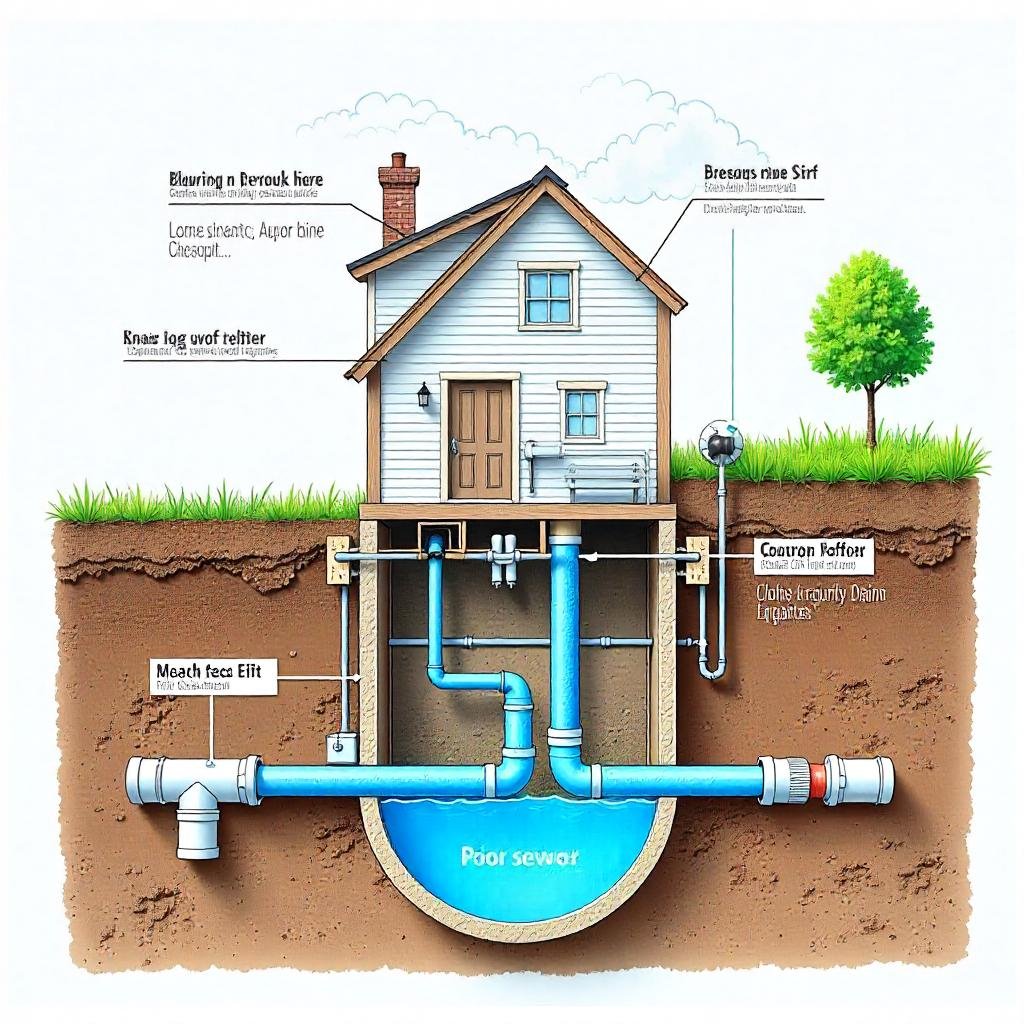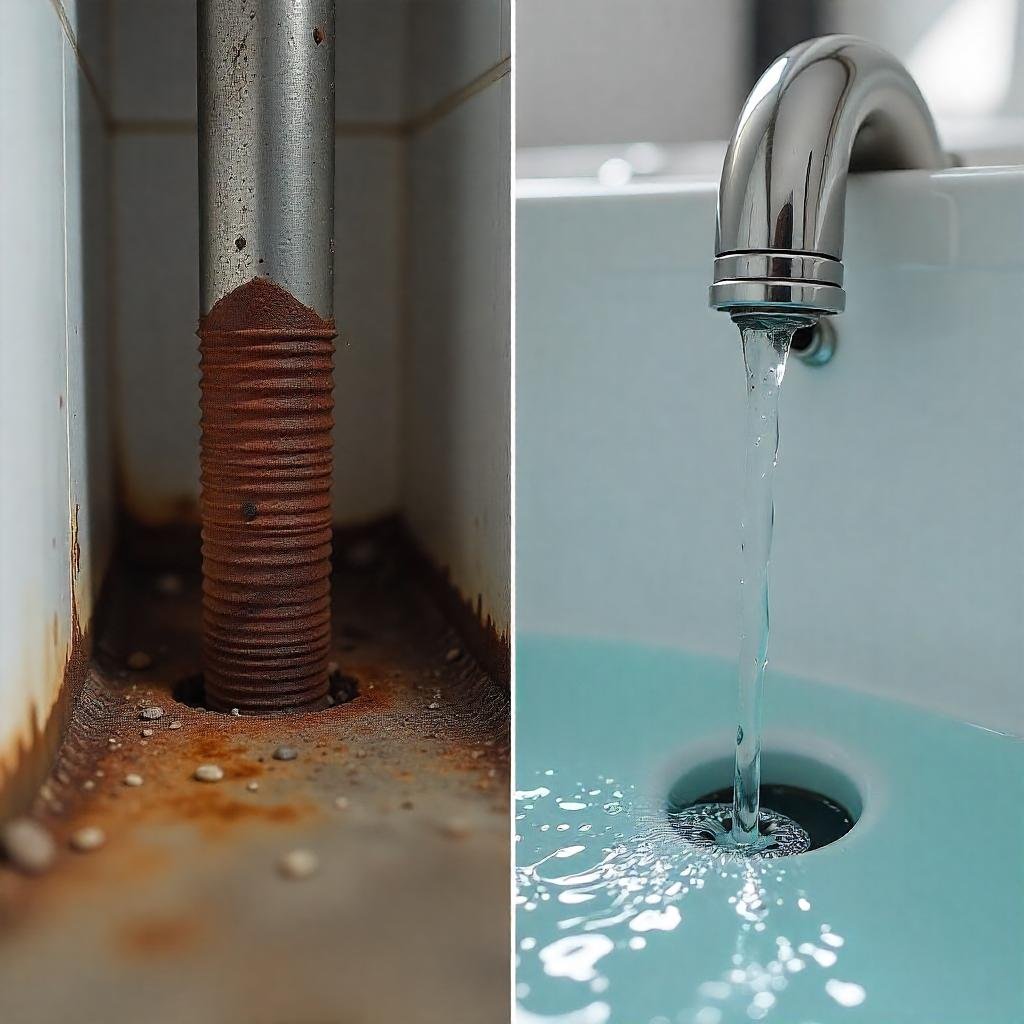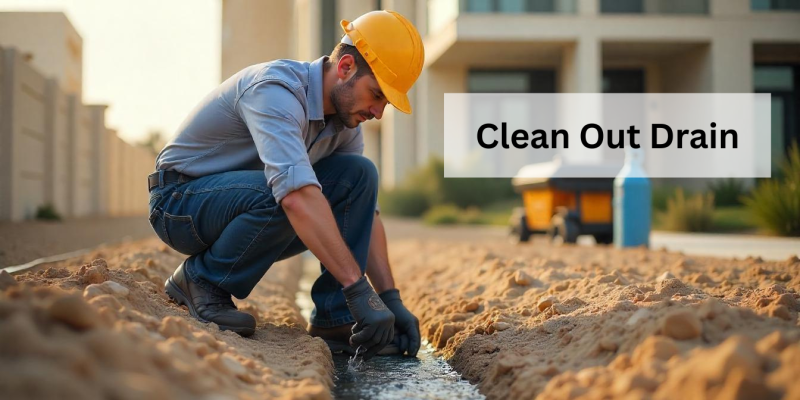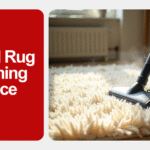When it comes to maintaining your home’s plumbing system, understanding drain cleanouts is crucial for every homeowner in Dubai, Sharjah, and Ajman. These essential components of your drainage system provide access points that allow you to clean out drain blockages and maintain proper water flow throughout your property—an important part of comprehensive house cleaning services.
Understanding Drain Cleanouts and Their Importance
A drain cleanout is a vital access point in your plumbing system that allows plumbers and homeowners to clean out drain pipes efficiently. These cleanouts are typically found at strategic locations throughout your drainage network, providing direct access to your main sewer line and other critical pipe sections.
The primary purpose of cleanouts is to facilitate maintenance and repair work on your drain system. When you need to clean out drain blockages or perform routine maintenance, these access points eliminate the need to dig up your entire plumbing system. In Dubai’s urban environment, where space is at a premium, having properly positioned cleanouts can save both time and money during plumbing emergencies.
Types of Drain Cleanouts
Main Drain Cleanout: This is the most important cleanout in your home plumbing system, typically located where your main sewer line connects to the municipal sewer system. The main drain cleanout provides access to your primary drainage line and is essential for addressing major blockages.
Sewer Cleanout: These cleanouts are specifically designed to access your sewer line and are usually found along the path of your main sewage line. A sewer cleanout typically features a threaded plug with a square nut that can be removed using a pipe wrench.
Indoor Drain Cleanouts: These are smaller access points found inside your home, often near a floor drain or in utility areas. They provide access to specific sections of your drain system without requiring outdoor excavation.
Locating Your Drain Cleanouts
Finding your cleanouts is the first step in effective drain maintenance. In most homes across Dubai, Sharjah, and Ajman, you’ll find cleanouts in several key locations:
Exterior Cleanouts
The main drain cleanout is typically located outside your home, often near the foundation. Look for a black or white pipe with a threaded plug protruding from the ground. This pipe may be covered with a plastic cap or a metal cap to protect it from debris and weather.
In some cases, the cleanout may be covered by landscaping or concrete. If you still cannot locate the drain cleanout after checking obvious locations, it may be hidden under decorative elements or buried slightly below ground level.
Interior Cleanouts
Inside your home, cleanouts are commonly found in basements, utility rooms, or crawl spaces. These indoor drain access points are usually positioned along the main drain line and may be located near a floor drain or other plumbing fixtures.
The Anatomy of a Cleanout
Understanding the components of a cleanout helps you properly maintain and use these access points:
Cleanout Plug: This is the removable component that seals the cleanout when not in use. Most cleanout plugs feature a square nut on the drain cleanout that requires a pipe wrench or a large adjustable wrench to remove.
Cleanout Pipe: The vertical or horizontal pipe that provides access to your drain system. This cleanout pipe is typically made of PVC or cast iron and connects directly to your main drainage line.
Cap or Cover: Many cleanouts are protected by a plastic cap or metal cover that prevents debris from entering the system and protects the threaded plug and a square nut from corrosion.
When to Clean Out Drain Systems
Regular maintenance is key to preventing major plumbing issues. Here are signs that indicate you need to clean out drain systems:

Warning Signs
- Slow drainage in multiple fixtures
- Gurgling sounds from drains
- Unpleasant odors emanating from drains
- Back up of water in sinks or tubs
- Sewage smells in your yard
Scheduled Preventive Maintenance
To maintain your drain system effectively, establish a regular cleaning schedule:
- Monthly: Clean out drain traps and remove visible debris
- Quarterly: Inspect cleanouts for damage or blockages
- Annually: Professional drain cleaning and inspection
- As needed: Address specific clogs or drainage issues
How to Clean Out Drain Cleanouts Safely
When you need to clean out drain blockages through a cleanout, follow these safety procedures:
Preparation
Before you start to open the plug, gather necessary tools:
- Pipe wrench or large adjustable wrench
- Rubber gloves
- Safety glasses
- Drain snake or motorized drain auger
- Water collecting bucket
Step-by-Step Process
- Locate the appropriate cleanout for your drainage issue
- Remove the cap protecting the cleanout
- Carefully use a pipe wrench to loosen the threaded plug
- Be prepared for water flow when you open the plug and see water
- Insert cleaning equipment such as a drain snake into the cleanout
- Work systematically to remove blockages
- Flush out the system with water to check the flow is proper
- Replace the plug and secure it properly
Safety Considerations
When working with cleanouts, always prioritize safety. Wear gloves and use a pipe wrench properly to avoid injury. If you open the plug and see water backing up, this may indicate a serious blockage that requires professional attention. In some cases, your house may fill with backed-up sewage if the blockage is severe, so proceed cautiously.
Common Cleanout Problems in UAE Homes
The unique climate and infrastructure conditions in Dubai, Sharjah, and Ajman can create specific challenges for drain cleanouts:
Sand and Debris Deposits
The desert environment can lead to sand accumulation in drain systems. Regular cleaning helps prevent this type of drain clog from becoming a major issue.
Corrosion Issues
High humidity and salt air in coastal areas can cause corrosion of metal cleanout components. Regular inspection and maintenance of the nut on the drain cleanout and other metal parts is essential.
Root Intrusion
In older homes, tree roots may infiltrate sewer lines through damaged cleanouts. This type of blockage often requires professional intervention to repair the main drainage line.
Professional vs. DIY Cleanout Maintenance
While homeowners can perform basic cleanout maintenance, certain situations require professional expertise:
When to Call Professionals
- Persistent blockages that don’t respond to basic cleaning
- Multiple drain backups throughout your home
- Sewage smells that cannot be removed after cleaning
- Structural damage to cleanout components
- Main drain blockage affecting your entire plumbing system
Do-IT Yourself Maintenance Tasks
Homeowners can safely perform these maintenance tasks:
- Removing debris from cleanout covers
- Basic drain cleaning with appropriate tools
- Visual inspection of cleanout components
- Minor adjustments to cleanout plugs
Cleanout Installation and Replacement
In some cases, you may need to install new cleanouts or replace damaged ones:
Installation Considerations
When installing new cleanouts, consider:
- Future ease of maintenance
- Proper sizing for your drain system
- Local code and regulations
- Complex systems Professional installation
Replacement Indicators
Replace cleanouts when you notice:
- Cracked or damaged cleanout pipes
- Corroded plugs that cannot be removed
- Leaking around the cleanout connection
- Inadequate access to your drain system
Maintaining Your Drain System Between Cleanouts
Proper drain maintenance extends beyond cleanout access:
Regular Drain Care
- Avoid putting grease down kitchen drains
- Use drain screens to catch debris
- Flush drains regularly with hot water
- Schedule professional inspections annually
Preventive Measures
- Install proper drainage around your property
- Maintain landscaping to prevent root intrusion
- Deal with 100 percent with minor problems before they turn into major problems
- Keep cleanout areas clear and accessible
Emergency Drain Cleanout Procedures
When facing a plumbing emergency, knowing how to access your cleanouts can prevent extensive damage:
Emergency Steps
- Locate the main drain cleanout immediately
- Evaluate the scenario prior to his or her trying to repair it
- Contact professionals for major blockages
- Write about the problem to insurance purposes
- Take precautionary steps to reduce damage
Emergency Preparedness
Have these things at hand
- Contact information for emergency plumbers
- Basic tools for cleanout access
- Safety protective equipment
- The location of emergency shut-off valves
The Future of Drain Cleanout Technology
Modern plumbing technology continues to evolve, offering new solutions for drain maintenance:enance:

Advanced Inspection Methods
- Camera inspection systems for detailed drain analysis
- Hydro-jetting equipment to clean up well
- Smart surveillance systems to identify issues at an early stage
- Minimal disruption trenchless repair methods
Sustainable Practices
- Green cleaning products
- Water saving methods
- Recycled materials for cleanout construction
- Efficient maintenance equipment
Frequently Asked Questions
How to Locate the Sewer Cleanout in Your Home?
To locate the sewer cleanout, start by checking the exterior of your home near the foundation. Look for a cluster of drainage pipes or a single pipe with a cap that may be sealed with a threaded plug. The location of this access point is typically where your main sewage line that extends from your home connects to the municipal system. If you cannot find it outside, check your basement or crawl space for an indoor cleanout. Sometimes the main drain cleanout may be hid under landscaping or covered by an expandable plug.
What Is a Sewer Cleanout and Why Is It Important?
A sewer cleanout is an access point in your home sewage system that allows direct entry to your main plumbing line. This drain cleanout gives you the ability to clear blockages and perform maintenance without excavating your entire drainage system. The cleanout drain typically features a t- or y-shaped pipe fitting that connects to your main line, making it easier to unclog the drain when problems arise.
How Do You Unclog a Main Drain Through the Cleanout?
To unclog a main drain, first remove the drain cleanout plug carefully. If the sewer line gets clogged, you can use professional drain cleaners or a drain snake through the drain opening. Start by attempting cleaning the line with appropriate tools, but be prepared for water to flow out when you open the cleanout. If there’s a serious stoppage in the line, it’s best to contact a professional to locate the drain issue and resolve it properly.
What Should You Do When Your Sewer Line Gets Clogged?
When your sewer line becomes blocked, first check if multiple drains in your home are affected. If so, the issue is likely in your main drain line rather than individual fixtures. Access your sewer clean outs and inspect for obvious blockages. Avoid putting more water down the drain until the clog is resolved. If the problem persists after basic cleaning attempts, contact a professional as the issue may involve your septic system or connection to the municipal sewer drain.
How to Clean Indoor Drain Cleanouts Safely?
Indoor drain cleanouts require careful handling since they’re part of your home’s drain system. Before you start, make sure that you have proper ventilation and protection. Remove the drain cleanout plug slowly and be prepared for potential backflow. Use appropriate tools to clear any debris from the drain cleanout pipe. The cleanout drain should be easily accessible, but if it’s been covered or sealed improperly, you may need professional assistance to restore proper function.
What Is the Main House Trap and How Does It Relate to Cleanouts?
The main house trap, also called the main house trap, is a curved section of pipe that prevents sewer gases from entering your home. This component is often located near your main drain cleanout and serves as an additional access point for maintenance. The trap connects your home’s drain to the main sewage line and may have its own cleanout access. Understanding this connection helps when you need to get a drain cleaning service or perform maintenance on your home sewage system.
How Often Should You Clean Your Drain Line?
Regular maintenance of your drain line helps prevent major blockages and extends the life of your plumbing system. Inspect your cleanouts monthly and perform basic cleaning quarterly. If you notice slow drainage or unusual odors, it may indicate that your sewer line needs attention. Professional cleaning should occur once a year, particularly in an older home, or where the line is connected to a septic system rather than municipal sewer.
What Tools Do You Need for a Guide on How to Clean Drain Cleanouts?
Essential tools for drain cleanout maintenance include a pipe wrench to remove the drain cleanout plug, a drain snake or auger for clearing blockages, and protective gear including gloves and safety glasses. You may also need a flashlight to inspect the drain cleanout pipe and buckets to catch any water that flows out. For more serious blockages, professional-grade drain cleaners or motorized equipment may be necessary to effectively unclog and restore proper flow.
How Can You Tell If Your Main Drain Line Needs Professional Attention?
Signs that require professional intervention include multiple drains backing up simultaneously, sewage odors throughout your home, or water backing up when you use other fixtures. If you’ve attempted basic cleaning through the cleanout but the problem persists, or if you discover damage to the drain cleanout pipe itself, it’s time to call a professional. Additionally, if your home connects to a septic system and you notice issues with the line with the septic tank, professional assessment is essential.
What Are Common Problems That Affect Sewer Clean Outs?
Common issues include cleanout plugs that are sealed too tightly or have become corroded over time, making them difficult to remove. Sometimes cleanouts become covered by an expandable plug that wasn’t properly installed, or they may be buried under landscaping that has grown over them. Damage to the drain cleanout pipe itself can occur from ground settling or root intrusion. Regular inspection helps identify these problems before they become major issues requiring extensive repair to your home’s drain system.
Conclusion
Understanding and maintaining your drain cleanouts is essential for every homeowner in Dubai, Sharjah, and Ajman. These critical access points in your plumbing system provide the means to clean out drain blockages efficiently and maintain proper drainage throughout your property.
Regular inspection and maintenance of your cleanouts, combined with proper usage techniques, can prevent costly plumbing emergencies and extend the life of your drainage system. Whether you’re dealing with a simple clog or a complex sewer line issue, having accessible and well-maintained cleanouts makes all the difference.
Remember that while basic cleanout maintenance can be performed by homeowners, complex issues require professional expertise. Don’t hesitate to contact qualified plumbers when dealing with persistent drainage problems or when you cannot locate the drain cleanout in your system.
By following the guidelines outlined in this comprehensive guide on how to clean and maintain your drain cleanouts, you’ll be well-equipped to handle most drainage issues and keep your plumbing system functioning optimally for years to come.
Need Professional Drain Cleaning Services?
Don’t let clogged drains disrupt your daily routine. At AMPC, we specialize in comprehensive drain cleaning and maintenance services throughout Dubai, Sharjah, and Ajman. Our experienced technicians are equipped with the latest tools and technology to clean out drain systems efficiently and effectively.
Contact AMPC Now
Address: England Cluster X-09, Office # 316, International City, Dubai, UAE
Phone: (971) 55-661-0234
Phone: 0207 836 5089
Whether you need emergency drain cleaning, routine maintenance, or help locating your cleanouts, our professional team is ready to provide reliable, affordable solutions for all your plumbing needs. Call us today and get a free consultation and see the difference professional service makes!











